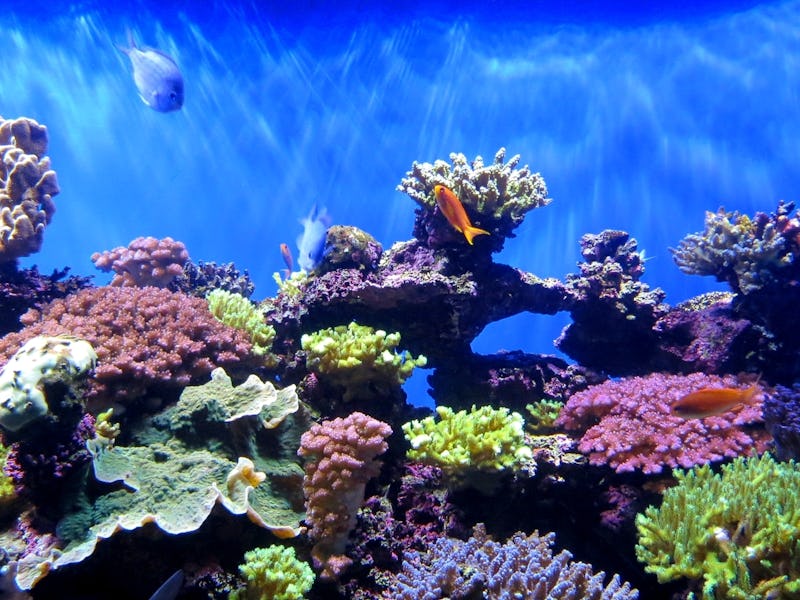Coral Reefs Are More Stunning Than Ever, Which Means They're Dying
Coral reefs burn brighter before they die out.

On Thursday — World Oceans Day — Netflix released a visually gorgeous trailer for a it’s documentary, Chasing Coral.
The film follows marine biologists and camera designers as they try to develop a time-lapse camera to capture the deterioration of the coral reefs. But a viewer watching the shots — vivid pinks, brilliant turquoises, greens that sparkle like emeralds — might scoff at anyone suggesting the coral reefs were “dying.”
The irony, however, is that these saturated colors mean they are slowly dying.
As climate change has jacks up the ocean’s temperature, coral reefs have become increasingly threatened. Coral are temperature sensitive — too hot is just as bad as too cold.
That’s not because coral are picky organisms. It’s actually because algae and single-cell organisms called dinoflagellates living within the coral are super sensitive to temperature. If the algae and dinoflagellates are exposed to extreme heat or cold, they die. And as they die, all that is left of the coral is the white calcium carbonate structure.
It might be easy to think white coral is an automatic sign of death and that colorful coral is basically nature waving its healthy and thriving flag. But that’s wrong: Healthy coral has subtle earthy tones. The brighter fluorescent tones we’ve become accustomed to seeing is actually a sign that the coral is going through heat stress.
Coral Reefs Become White When They Dying
Melissa Roth and Dimitri Deheyen have seen this in the branching coral Acropora yongei. They studied how fluorescence in the coral would change depending on temperature by placing coral in three different temperature conditions and watching them over 20 days. While the coral in the cold and normal temperature glowed a little bit stronger, the coral in the warmer temperature out-glowed the other two, continuing to get stronger even after the coral became bleached.
Roth and Deheyen argue that the reason the glow is so strong after bleaching is the fewer dinoflagellates: Without being as densely packed in the coral, there is more room for light to scatter and therefore make the reefs a technicolor show.
While bleaching can occur rapidly, it doesn’t mean coral can’t bounce back from it — and Chasing Coral aims to convey this hopeful message, that even after bleaching has occurred, coral can recover so long as the environment improves.